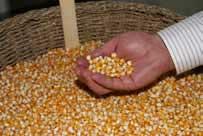Sales of U.S. corn to Egypt have been strong in recent weeks as, the country recovers from downtime and shipping delays resulting from the demonstrations and political unrest in the nation in late January and February.
Sales of 609,000 metric tons (23.9 million bushels) this week, as reported by the Foreign Agricultural Service, are up considerably from sales of 366,600 tons (14.4 million bushels) reported a year ago – yet strong sales of late are only part of the story.
U.S. corn sales to Egypt have been booming the entire marketing year, reaching 1.6 million tons (63 million bushels) thus far and well ahead of the 884,000 tons (34.8 million bushels) a year ago at this time.
“Egypt has come into the U.S. market consistently in part because of the high-quality corn the United States has to offer,� said Terry Vinduska, chairman of the U.S. Grains Council. “That’s been very appealing to buyers there. At the same time, they recognize the ability of the United States to offer a reliable supply and that’s valuable reassurance to importers and end-users. The result is the United States is virtually Egypt’s only corn supplier right now.�
Dr. Hussein Soliman, USGC director in Egypt, said local corn prices were up considerably during the unrest. Now, as ports catch up and shipments resume, corn prices are returning to a more normal level.
However, the brief increase in corn prices enticed livestock feeders, not already using U.S. distiller’s dried grains with solubles (DDGS), to incorporate the ingredient into their rations.
“Although we were unable to keep the office open during the crisis, we continued assisting producers, providing them with information on DDGS and how it can be incorporated into rations,� Soliman said.
Soliman explained that U.S. DDGS is becoming more competitive, as more suppliers enter the marketplace.
“The increase in DDGS suppliers has improved pricing options and encouraged producers to use U.S. DDGS,� Vinduska said. “In fact, end-users in all sectors are using U.S. DDGS now, including the dairy and beef sectors that were limited before. They’ve increased their use dramatically because of Council efforts during the crisis.�


